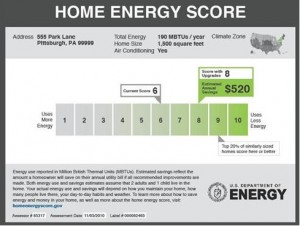Archive for category Sustainable Retrofits
86% of Building Construction Expenditures Relate to Renovation of Existing Buildings
Posted by Jim Foster in BIM, Built Environment, economic trends, Energy Analysis, Green, Sustainable Retrofits on February 18, 2013
 “As ASHRAE President Gordon V.R. Holness noted in the ASHRAE Journal, “Approximately 86% of building construction expenditures relate to renovation of existing buildings, not to new construction.” Holness estimated that “over the next 30 years about 150 billion sf of existing buildings (roughly half of the entire building stock in the United States) will need to be renovated.” Historically, new construction only adds about 2% annually to the U.S. commercial building stock, so the real opportunities for reducing operating costs must be found in building retrofit and renovation.” – Glumac Blog.
“As ASHRAE President Gordon V.R. Holness noted in the ASHRAE Journal, “Approximately 86% of building construction expenditures relate to renovation of existing buildings, not to new construction.” Holness estimated that “over the next 30 years about 150 billion sf of existing buildings (roughly half of the entire building stock in the United States) will need to be renovated.” Historically, new construction only adds about 2% annually to the U.S. commercial building stock, so the real opportunities for reducing operating costs must be found in building retrofit and renovation.” – Glumac Blog.
Buildings are the major source of global demand for energy and materials that produce by-product greenhouse gases (GHG). Slowing the growth rate of GHG emissions and then reversing it is the key to addressing climate change and keeping global average temperature below 2°C above pre-industrial levels.
To accomplish this, Architecture 2030 issued The 2030 Challenge asking the global architecture and building community to adopt the following targets:
- All new buildings, developments and major renovations shall be designed to meet a fossil fuel, GHG-emitting, energy consumption performance standard of 60% below the regional (or country) average/median for that building type.
- At a minimum, an equal amount of existing building area shall be renovated annually to meet a fossil fuel, GHG-emitting, energy consumption performance standard of 60% of the regional (or country) average for that building type.
- The fossil fuel reduction standard for all new buildings and major renovations shall be increased to:
- 70% in 2015
- 80% in 2020
- 90% in 2025
- Carbon-neutral in 2030 (using no fossil fuel GHG emitting energy to operate).
These targets may be accomplished by implementing innovative sustainable design strategies, generating on-site renewable power and/or purchasing (20% maximum) renewable energy.
Please visit Frequently Asked Questions section for more in-depth information on the 2030 Challenge.
******
*Note: This was stated in the January 2008 Edition of the ASHRAE Journal. When we polled permitting for Boston, we found 75% for construction in Existing Buildings. 25% New.
IFMA Releases Sustainability Guide and Carbon Footprint Measuring Guidelines for Buildings
Posted by Jim Foster in BIM, New Technologies, Smart Building, Sustainable Retrofits on May 1, 2012
 IFMA (International Facility Management Association) the leading association for facility managers released a Sustainability Guide and Measuring Guidelines for determining a buildings footprint. Buildings which account for around 40% of energy usage are perhaps the biggest consumers of fossil fuels and producers of carbon. In order to understand how buildings are consuming energy, creating carbon and determining ways to manage and reduce it IFMA published the guide and it is available for free.
IFMA (International Facility Management Association) the leading association for facility managers released a Sustainability Guide and Measuring Guidelines for determining a buildings footprint. Buildings which account for around 40% of energy usage are perhaps the biggest consumers of fossil fuels and producers of carbon. In order to understand how buildings are consuming energy, creating carbon and determining ways to manage and reduce it IFMA published the guide and it is available for free.
According to the guide and referencing a report from Groom Energy Solutions and Pure Strategies highlights the top five drivers that motivate a business to track and report carbon:
- Improved company/brand image
- Requests from top customer
- Investor pressure
- GHG regulation
- Cost savings
(Groom Energy Solutions 2010)
While surprising to me that cost savings is at #5 I think as more and more positive ROI cases are published people will realize that a path to sustainability brings more profits due to reduced operating costs. Looks to me though that the role of the FM is going to get more glamorous, and those skilled in this art should be in high demand.
RCx projected to have an 83% Annual Growth Rate the next 4 years: What?! Commercial Building Retro Commissioning (RCx)
Posted by Jim Foster in Built Environment, Smart Building, Sustainable Retrofits on September 19, 2011
So according to Pike Research, yes “Commercial Building Retro-Commissioning Revenue Could Surpass $1.8 Billion in the United States by 2014” So that’s a mouthful. Retro-Commisoning, also dubbed RCx, why? I don’t know, looks cool, but RCx simply ” is a process that seeks to improve how building equipment and systems function together. ” Why not say that, well, see cool comment earlier. But according to Evan Mills. 2009. “Building Commissioning: A Golden Opportunity for Reducing Energy Costs and Greenhouse-gas Emissions” and thier report which “provides the world’s largest database of commissioning case studies for new and existing buildings.”
The results demonstrate that commissioning is arguably the single-most cost-effective strategy for reducing energy, costs, and greenhouse-gas emissions in buildings today.
Who stands to benefit from retro-commissioning? according to EnergyStar, “Building owners, managers, staff, and tenants all stand to gain from the retrocommissioning process. It can lower building operating costs by reducing demand, energy consumption, and time spent by management or staff responding to complaints. It can also increase equipment life and improve tenant satisfaction by increasing the comfort and safety of occupants.”
And if this RCx did not have enough addictive properties:
- Median commissioning costs: $0.30 and $1.16 per square foot for existing buildings and new construction, respectively (and 0.4% of total construction costs for new buildings)
- Median whole-building energy savings: 16% and 13%
- Median payback times: 1.1 and 4.2 years
- Median benefit-cost ratios: 4.5 and 1.1
- Cash-on-cash returns: 91% and 23%
- Very considerable reductions in greenhouse-gas emissions were achieved, at a negative cost of -$110 and -$25/tonne CO2-equivalent.
So where to start? Well like a lot of trends California is a good place, and their Commissioning Collaborative Handbook. And this thing is such a mouthful I’ll need to further elaborate in future posts after I can digest this RCx meal.
Obama Administration Boosts Retrofits : Biden Announces Fed Program
Posted by Jim Foster in BIM, Built Environment, Sustainable Retrofits on November 12, 2010
 Am I calling it or what? As reported by Martin LaMonica on CNET and the Steven Thomma of the Miami Herald Vice President Joe Biden with US Department of Energy Secretary Steven Chu on Tuesday unveiled a new federal program to make it easier for Americans to make their homes more energy efficient, saying it will help people save money and create new jobs for contractors.
Am I calling it or what? As reported by Martin LaMonica on CNET and the Steven Thomma of the Miami Herald Vice President Joe Biden with US Department of Energy Secretary Steven Chu on Tuesday unveiled a new federal program to make it easier for Americans to make their homes more energy efficient, saying it will help people save money and create new jobs for contractors.Excerpts for the release below:
“The initiatives announced today are putting the Recovery Through Retrofit report’s recommendations into action – giving American families the tools they need to invest in home energy upgrades.” said Vice President Biden. “Together, these programs will grow the home retrofit industry and help middle class families save money and energy.”
“The Home Energy Score will help make energy efficiency easy and accessible to America’s families by providing them with straightforward and reliable information about their homes’ energy performance and specific, cost-effective energy efficiency improvements that will save them money on their monthly energy bills,” said Secretary Chu.
Under this voluntary program, trained and certified contractors will use a standardized assessment tool developed by DOE and Lawrence Berkeley National Laboratory to quickly evaluate a home and generate useful, actionable information for homeowners or prospective homebuyers. With only about 40 inputs required, the Home Energy Scoring Tool lets a contractor evaluate a home’s energy assets, like its heating and cooling systems, insulation levels and more, in generally less than an hour. That means a homeowner can see how their home’s systems score, regardless of whether a particular homeowner takes long or short showers or keeps their thermostat set high or low.
The following states and municipalities are participating in the pilot program: Charlottesville, Virginia; Allegheny County, Pennsylvania; Cape Cod and Martha’s Vineyard, Massachusetts; Minnesota; Omaha and Lincoln, Nebraska; Indiana; Portland, Oregon; South Carolina; Texas; and Eagle County, Colorado. Learn more about each of the testing locations along with details on how to participate in the Home Energy Score program.
Consumers can apply for up to $25,000 in PowerSaver loans through the U.S. Department of Housing and Urban Development, which expects that 24,000 homes will qualify during a two-year pilot program, according to USA Today.
This home energy retrofit program follows a $5 billion weatherization investment that was part of the stimulus package last year. Another effort is Home Star, nicknamed Cash for Caulkers, which would provide rebates to consumers for investing in energy efficiency retrofits.
Read more: http://news.cnet.com/8301-11128_3-20022184-54.html#ixzz155UA7FTa
How does this effect BIM users/developers, etc.?
Commercial deployment will be huge and has more robust documentation and reporting needs, plus these firms getting into it will need to have better tools, etc as the race begins to fill these needs and to differentiate themselves from competition, imagine a 3D BIM model with all the reporting built into it. I have to imagine the plug ins are already under development. Additionally, did you notice the certification needs recommended for this. Strap it on, let’s get back to work.
Sustainable Retrofits Projected to be $400b US Market by 2030
Posted by Jim Foster in Built Environment, Green, New Technologies, Sustainable Retrofits on August 27, 2010
 I had a conversation yesterday with as Program Manager from Autodesk who was looking into implementing workflows utilizing Autodesk Products to produce energy analysis for existing buildings. He had seen one of our many fantastic videos for PKNail, okay we have two homegrown videos, but our effort in capturing the built environment dovetails nicely with this effort. And while I have commented many times on the sustainable retrofit market I had not seen a number placed on it but Autodesk posted a number on their web site. If you are not intending to make the jump you can read some of their conclusions below.
I had a conversation yesterday with as Program Manager from Autodesk who was looking into implementing workflows utilizing Autodesk Products to produce energy analysis for existing buildings. He had seen one of our many fantastic videos for PKNail, okay we have two homegrown videos, but our effort in capturing the built environment dovetails nicely with this effort. And while I have commented many times on the sustainable retrofit market I had not seen a number placed on it but Autodesk posted a number on their web site. If you are not intending to make the jump you can read some of their conclusions below.
Buildings are key to achieving climate stabilization, representing roughly 40% of global energy consumption and 25% of global carbon emissions. In addition, energy efficiency retrofits represent a massive latent market, projected to reach an estimated worth of $400 billion by 2030 in the U.S. alone. To respond to these twin environmental and market demands at scale and speed, the building industry needs to respond quickly and cost-effectively.
Our research suggests that rapid energy modeling enables building energy assessments with a smaller budget and shorter time frame, and can thereby help increase the number of existing buildings that undergo assessment and energy upgrades. We expect property owners and managers, home buyers, tenants and landlords, designers and architects, auditors, and energy consultants to benefit from such a workflow.
Included in this effort is Revit CEA (Conceptual Energy Analysis) that allows the user, after putting parameters in place, to use a cloud computing enironment, that is send it out for computation, to perform the calculations using Green Building Studio as the back end but making it transparent to the user. What I like about this effort is that I am not required to fire up or even know Green Building Studio to do the energy analysis, the export and data exchange, done in gbXML is done seemlessly and I get the report.
But back to the original premise which is getting existing buildings into a format that you can perform this and Autodesk has developed a workflow to help, and while this is excellent I would also argue for PKNail’s place in the workflow as measuring and building in the environment you are going to model and analyze reduces a couple of steps and amount of software you need to know. I don’t argue it should be the only tool just that it deserves a place on the shelf.
Using BIM for Sustainable Design
Posted by Jim Foster in BIM, Sustainable Retrofits on July 26, 2010
 Good article in Architecture Week titled, strangely enough, Using BIM for Sustainable Design, I guess we’re getting that horse out of the stable again, but this is it. Like AARA funds and the stimulus package put every paver and asphalt layer in the US back to work, sustainable design and retrofits are and will be it. Eddy Kryiegel, the author, goes on to elaborate the ease that option analysis and energy modeling that comes with BIM.
Good article in Architecture Week titled, strangely enough, Using BIM for Sustainable Design, I guess we’re getting that horse out of the stable again, but this is it. Like AARA funds and the stimulus package put every paver and asphalt layer in the US back to work, sustainable design and retrofits are and will be it. Eddy Kryiegel, the author, goes on to elaborate the ease that option analysis and energy modeling that comes with BIM.
In the case of energy modeling and its relationship to BIM, there are three primary steps involved: modeling the building geometry, adding building loads, and performing the analysis.
If you compare the time it takes to perform each of these steps for the same building type across a variety of analysis packages, you will see very similar results. During years of integrated practice, I have found that more than 50 percent of the overall time needed to perform an energy analysis is consumed by modeling building geometry.
Adding building loads accounts for about 35 percent, followed by less than 15 percent to perform the actual analysis. By simply being able to reuse the model geometry and transfer the building design from the BIM model to the energy model, we can reduce the time needed to run an energy model by almost half.
The traditional process of energy modeling within our own office typically takes a couple weeks. Using the workflow established with BIM, we can now perform some types of energy analysis in half the time, do twice as many as before, or make energy analysis available to projects that would normally not have the fee to support the endeavor.
A) If a project is started in BIM more services can be offered whereas they were too expensive the traditional way, and B) with option analysis you can find ways to make your building more efficient, demonstrate that with positive ROIs and have the analysis and design pay for itself. Just keeps on getting more compelling, like the Lebron laugh-a-lympics televised special, no strike that, like Lindsey..strike that, like having your cake and eating it too.
CALGreen is Coming : More Markets for Energy Analysis : Green Building : #BIM
Posted by Jim Foster in BIM, Green, Sustainable Retrofits on July 13, 2010
 Signed in 2004, mandatory in 2011 Executive Order S-20-04 set in motion a whole new set of building codes to reduce energy purchases by 20% by 2015. I included section 1 and 2 in their entirety below.
Signed in 2004, mandatory in 2011 Executive Order S-20-04 set in motion a whole new set of building codes to reduce energy purchases by 20% by 2015. I included section 1 and 2 in their entirety below.
1. That the state commit to aggressive action to reduce state building electricity usage by retrofitting, building and operating the most energy and resource efficient buildings by taking all cost-effective measures described in the Green Building Action Plan for facilities owned, funded or leased by the state and to encourage cities, counties and schools to do the same.
2. That state agencies, departments, and other entities under the direct executive authority of the Governor cooperate in taking measures to reduce grid-based energy purchases for state-owned buildings by 20% by 2015, through cost-effective efficiency measures and distributed generation technologies; these measures should include but not be limited to: 2.1. Designing, constructing and operating all new and renovated state-owned facilities paid for with state funds as “LEED Silver” or higher certified buildings; and 2.2. Identifying the most appropriate financing and project delivery mechanisms to achieve these goals; and 2.3. Seeking out office space leases in buildings with a U.S. EPA Energy Star rating; and 2.4. Purchasing or operating Energy Star electrical equipment whenever cost-effective.
Not only that, within the Executive Order their is a provision for CALPERS (the California Pension plan and huge investor) are ‘requested to target resource efficient buildings for real estate investments and commit clean technology funds to advanced sustainable and efficiency technologies.’
You can jump the new building codes home page here. With the GSA requiring a BIM on all new building and major renovations and now California requiring Green Building Practices in all their public buildings the increase in new technologies related to building will continue to grow. To completely beat the dead horse into submission, not that a dead horse needs to be beat any more, metaphorically speaking, but…sustainable retrofits, say it again…

